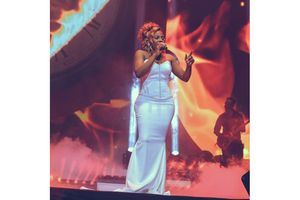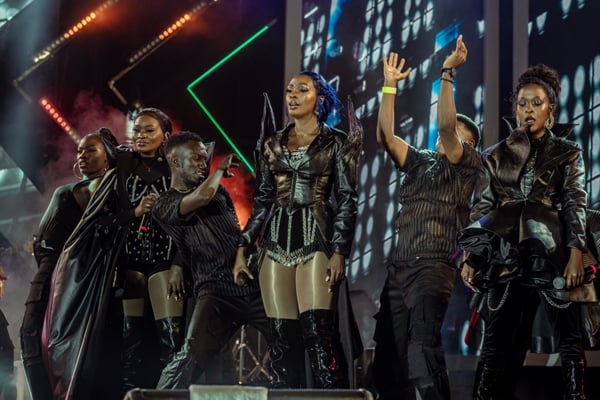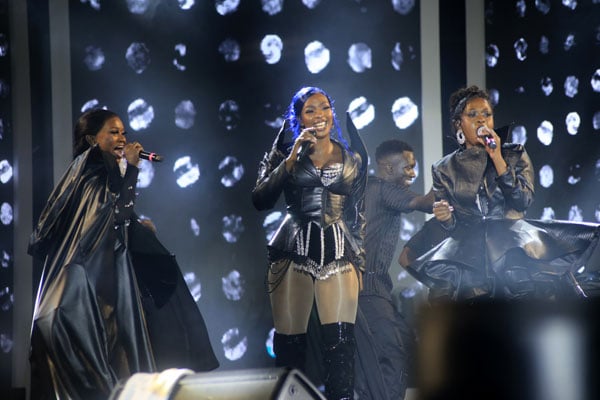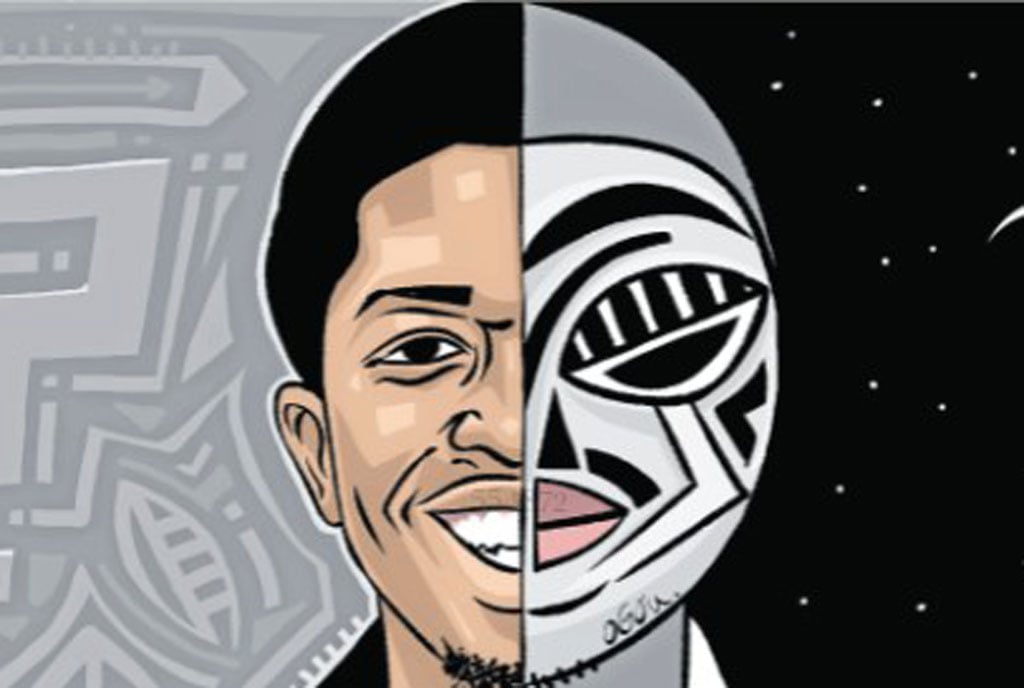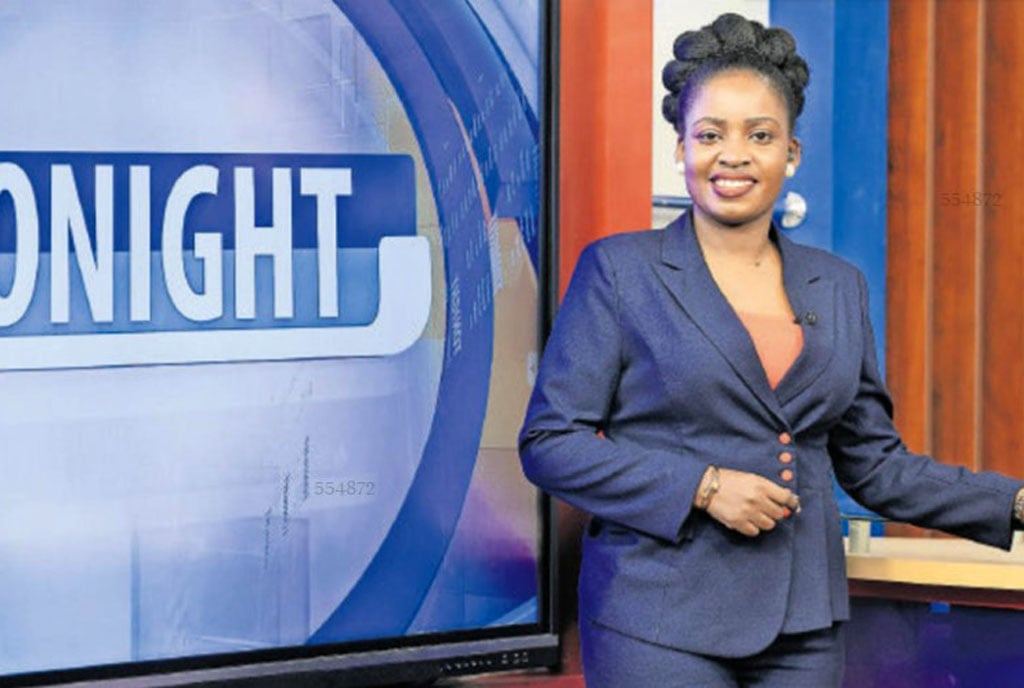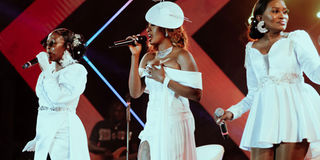
The Blu*3 trio of Lilian Mbabazi, Cindy Sanyu and Jackie Chandiru held a successful concert in June. PHOTOS/COURTESY
There were mixed feelings when artistes Aziz Azion, Ronald Mayinja and Hajji Haruna Mubiru announced that they were going to hold concerts. The concerns came about the fact that the above-mentioned artistes are no longer as active on the music scene as before. They had not released music yet today’s concerts are more of trending songs and the talkability an artiste has.
There was something common about these artistes. All their concerts sold-out and had a lasting impression to whoever attended.
Juliana Kanyomozi had a massive concert the other day.
So did Azion, Mubiru, Mayinja, Iryn Namubiru, Mesach Ssemakula and Blu*3 among others.
If someone had been living under a rock for the past sixteen years and finally decided to show face now, there are chances they could either think Ugandans refused to move on or it is still 2008.
For some reason, since Kanyomozi held her first concert after more than eight years at Kampala Serena Hotel’s Victoria Conference Centre, there has been a revival of music from the early 2000s and 2010s.
One could argue that this started when someone brewed an idea of creating Mukikadde, a celebration of old music and artistes. After their opening edition with artistes such as Afrigo Band and Maddox Ssematimba, they later ventured into other artistes, some of whom sang in the early or late 2000s.
And nothing has been the same since; artistes such as Sweet Kid have impressed during Mukikadde and have gone on to be guests at live band shows scattered in town or comedy nights.
Since 2022, many of such artistes have taken to the stage, and none of them has failed to give the audience a time of their lives.
Their shows are always anticipated, and they sell out; Mayinja, for instance, had people turn away because Serena was full to the brim; for Namubiru, all tickets and tables were sold out two days before the show.
What drives the shows most of the time is the nostalgia. For artistes such as Blu*3, for instance, the group was discovered 20 years ago; they released and recorded music together five years before Cindy left. At the time, artistes were not strategic like they are today; they released a lot of music in the shortest time. For instance, B2C releases music strategically in October, and at the beginning of the year, artistes such as Bebe Cool, Bobi Wine, and Chameleone would simply empty the tank.
At the height of his career, Henry Tigan released more than 10 songs under a year; in fact, besides Aneganye alongside Bobi Wine, all his known songs were released at the time. Blu*3’s catalogue was released in six years, and Radio and Weasel released more than 20 songs in 2008 alone.
Above all, 2000s shaped Uganda’s social scene, showbiz, and the industry as it is known today. From theme nights, music styles, and TV presenting to the style of presenting, the music of that time carries all these memories.
Which is not surprising that the nostalgia, coupled with a catalogue, commands the audience in numbers.
Others have also argued that the audience of these artistes is well mixed; it involves the youths of that time who want to relive their youth at concerts and the young people who probably danced to the music at their boarding schools.
However, even the technology has contributed to the rejuvenation of music from yesterday. While talking to the media before last year’s Tugende Mukikadde, Hajjat Sophia Nantongo said that most of the times, they believed people had forgotten about their music.
“But then at times you will be home and someone sends you a video of a young person doing a challenge to your song,” she says.
Over the past few years, TikTok and Snapchat have been used by youngsters to start up challenges, most of which are music or dance related. This has brought many old songs back into circulation and at times launching fresh careers.
TikTok has been such a revelation for old local songs because it gives music such as Mukyala Mugerwa an opportunity to share an algorithm with Azawi’s Masavu.
From Gen-Zs to millennials, there’s always a person sharing a song they either heard their parents play or they learnt was a hit in 2004, the year they were born.
Unlike YouTube, where the likes of Joshua Baraka or Azawi rake views for fun, songs such as Njagala nga Bwendi rarely enjoy the notoriety. However, on TikTok, it’s easy to find Sigwe Osimila raking millions of views on someone’s account. Most times, when the challenge goes viral, more people will do it thus giving the same song more rotation on literally the most popular platform of the generation.
Other people have succeeded
The success of Kanyomozi’s concert can also be attributed to the renaissance of the 2000s.
When she held a concert at Serena after years, her audience went from ordinary fans to the music fraternity. It was clear people love the music, but above all, the industry as well is willing to come out and give or receive the roses.
The future shows have not been different, relationships have been mended at such shows, for instance, when Mesach Ssemakula had his own show at Serena, he invited Geoffrey Lutaaya and his former Eagles and Golden Band production former members on stage.
The norm has been going on, even Haruna Mubiru who left Eagles to form Creme Production invited his former band members to sing with him.
At the moment, when most of these artistes have nothing to prove, they are willing to put the fights aside, but show up and sing.
More of such concerts coming up
With such concerts, the audience is rest assured of quality output. They will get value for money at the end of it all and with support that the fans have showed for such artistes, considering the successes of the previous shows, another one who is yet to stage considers the idea as Swangz Avenue’s Julius Kyazze points out.
“The growing popularity of concerts featuring older artists, like the Swangz Avenue Timeless Concert with Irene Nambiru and Juliana, is something we’ll likely see more of. This is largely due to a dedicated audience that began following these artists over a decade ago. This fan base has matured alongside the artists, and now that they have more disposable income, they are able to attend these well-organized events,” he says.
In regards to the costs of these concerts that go for not less than Shs100,000 for the ordinary sections and more than Shs1,000,000 for the VIP section, Kyazze however feels the audience is discerning—they care about who’s organising the event, who’s handling production, and they’re very conscious of their safety and security. “Because of this, they’re willing to pay a premium for a high-quality experience. As a result, we’ll continue to see more of these kinds of concerts in the future.”
With Jose Chameleone set for Legend in Gold at the end of the month, Ragga Dee also promising to have one at the beginning of next year, Sophie Nantongo has too released art-work for her upcoming concert to be held in May next year, apparently, there’s a Geoffrey Lutaaya concert in the offing as well.
More such concerts will be gracing us, and they will be successful because the music to back the concerts exists and is loved by a generation.
Who knows, next could be an Eagles Production reunion or better, a reunion of the original Firebase Crew, the ones who took over FM stations with that song, Funtula, remember them?

